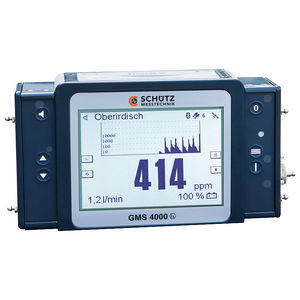
- Hydraulics - Pneumatics
- Pump
- Industrial vacuum unit
- Schütz GmbH Messtechnik
- Company
- Products
- Catalogs
- News & Trends
- Exhibitions
Industrial vacuum station MVS 302
Add to favorites
Compare this product
Characteristics
- Applications
- industrial
- Flow rate
14 m³/h
(494.41 ft³/h)- Suction pressure
850 mbar
(12.328 psi)
Description
The mobile vacuum station MVS 302 is a system with which gas pockets in the road can be extracted. For continuous measurement of the gas concentrations still present in the subsurface, it is possible to connect a gas detector to the system. The vacuum station is also suitable for testing and repairing heavy gas leaks.
The mobile vacuum station can be operated with up to three suction probes at the same time to extract gas pockets from the road. To check the gas concentration still present in the subsurface, a gas detector, e.g. the GM 3100 from Schütz can be connected.
The vacuum station is easy and convenient to use. A two-stage filter system holds back water and dirt. The filter change can be carried out easily and in just a few steps.
Very good results were achieved in comparative measurements with the MVS 302 vacuum station. The sealing of the drill holes is always guaranteed by means of a sealing cone. Of course, the probe tips are also available for other drilling diameters.
Contents of delivery:
A suction probe (max 3 pieces)
Control certificate
Operating manual
With the exhaust air telescope, the possibly existing gas traces can be better distributed. This is particularly recommended in pedestrian zones. Due to the high suction power of the suction system, the gas concentration in the ground is already very strongly diluted. Possibly the gas can still be smelled, but no longer with the exhaust air telescope. Depending on the requirements, the exhaust air telescope can be clicked in quickly.
Catalogs
Products
67 Pages
Other Schütz GmbH Messtechnik products
Devices and probes for gas pipe network inspection
Related Searches
*Prices are pre-tax. They exclude delivery charges and customs duties and do not include additional charges for installation or activation options. Prices are indicative only and may vary by country, with changes to the cost of raw materials and exchange rates.









